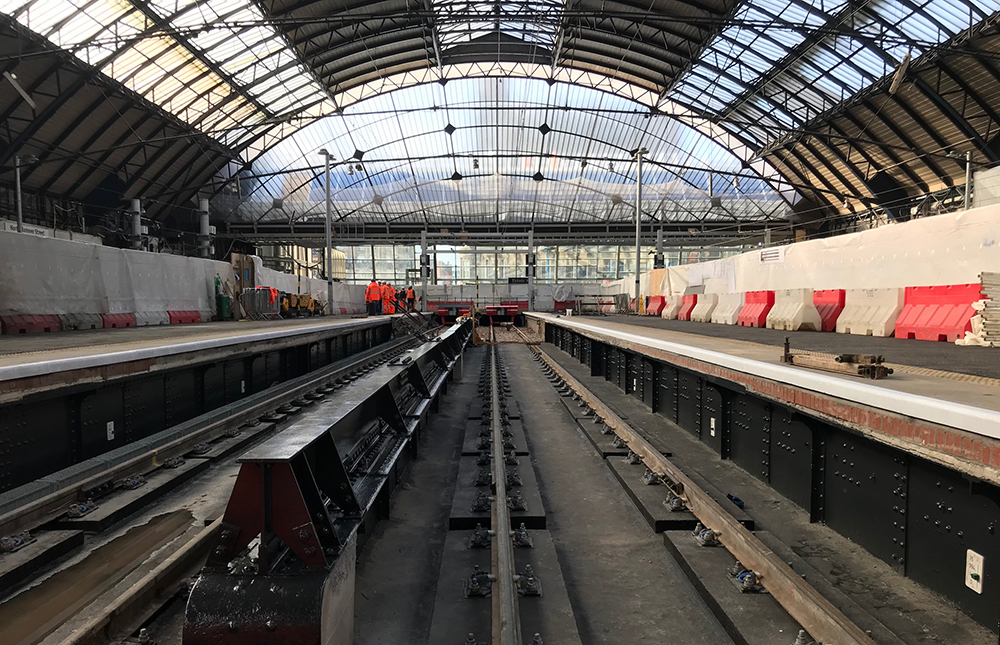Glasgow Queen Street platforms extension completed early
The lengthening of platforms 4 and 5 at Glasgow Queen Station has been completed early, Network Rail has said.

Work on the four-week-long project finished today on Sunday, nearly 24 hours ahead of schedule, and entered service at Scotland’s third-busiest station this morning as planned.
The platforms had closed on 16 September to allow engineers to undertake the 26-metre extensions, which involved removing 2,000 tonnes of material, installing 100 metres of new platform walls, 200 metres of new track and connecting it to the existing infrastructure, as well as extending the overhead power lines by 50 metres.
The completion of the platform 4 and 5 works follows the successful extension of platforms 2 and 3 earlier this summer. All track and overhead electrification works being delivered as part of the £120m redevelopment of the station have now been completed.
Kevin McClelland, route delivery director for capital delivery, said: “Our team has worked around-the-clock to complete this vital element of the redevelopment of Glasgow Queen Street as quickly as possible.
“Extending the platforms will allow longer electric trains to use them, meaning more seats for passengers.
“We appreciate the understanding customers have shown over the last four weeks while we have been completing this enhancement to their station.”
Once finished in spring 2020, the Queen Street redevelopment will revitalise the station, delivering a contemporary building with an expanded concourse almost double the size of the old station, with fully-accessible entrances on Dundas Street and George Square.
The redevelopment is part of the Edinburgh Glasgow Improvement Programme (EGIP) – a Scottish Government-funded investment in the railway infrastructure across central Scotland delivered by Network Rail Scotland.
Glasgow Queen Street station opened in 1842 with the Victorian glass roof, which is now a category A listed structure, constructed three decades later and completed in 1878.

















